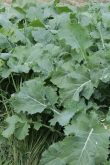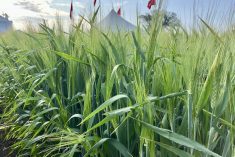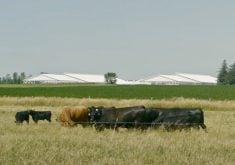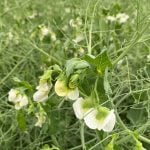When Gerry Bertholet signed up for a workshop on grazing native grasslands, he certainly wasn’t expecting to learn that he was doing everything wrong. According to the professor’s theories, they were overgrazing, their cows were too big and they were calving too early.
It was a bit of a bitter pill to swallow. He, Linda and their four children, Andrea, Kayla, Josie and Tanner, had put more than 20 years of heart, not to mention hard work, into building Maple Lake Stock Farms, a seedstock and commercial cow-calf operation in Manitoba’s southwest near Hartney.
Read Also
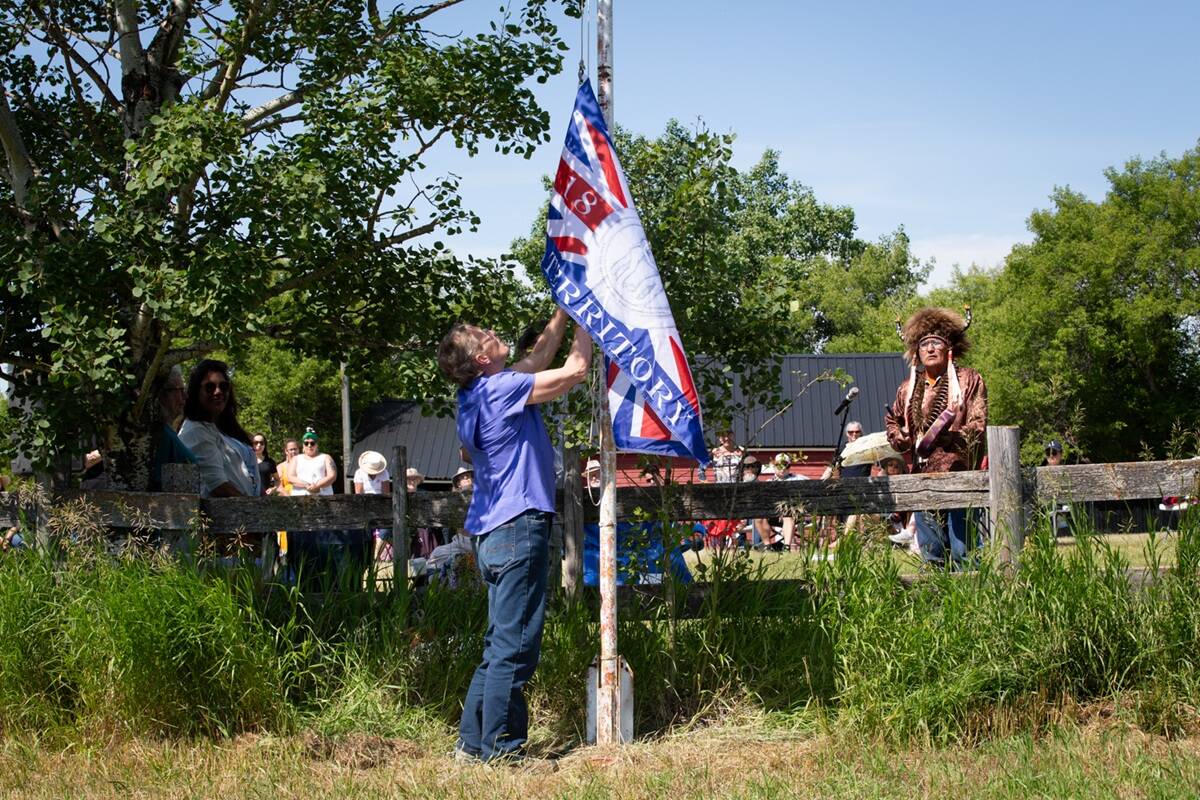
Treaty Land Sharing Network expands reach in Saskatchewan and Alberta
The Treaty Land Sharing Network, which connects land holders with First Nations and Metis people, has expanded since it began in 2018
“The professor, Lee Manske from North Dakota, explained how native grasses grow, and the more we thought about it, the more his method of grazing made sense,” Gerry says. “We used to save the native grass more for fall grazing. The way he explained it, if you graze native grasses after October 15, the cows will be taking the regrowth the plants need to get off to a good start in spring, and they do need to be nipped off early, between June 1 and July 15, to get them to tiller. You can only nip 33 per cent of the plants; any more than that and they won’t tiller, so you’ll get the same amount of biomass instead of increasing the biomass.”
They tested this idea on their own place by establishing four paddocks on 255 acres of native grass to start a twice-over grazing system on land they call Pluff’s pasture. Two paddocks were later subdivided to better manage grazing the high and low areas. Excess grass in the low areas is hayed to promote fresh growth for the next pass or next season.
Grazing starts around June 1 in the paddock where they left off the year before to stimulate the tillering process and provide an adequate rest period before the second pass. The first pass is generally eight to 11 days and the second is 20 to 22 days finishing October 15. They aim to end the season with as much biomass as there was at the start.
A tame tall fescue pasture and a native bush-slough pasture on the remaining 65 acres of the half section add flexibility to the system. They are grazed if the pairs are moved to Pluff’s pasture before June 1 or still there after October 15. Again, he’ll hay areas the cattle haven’t grazed down to 33 per cent. When grazing comes to an end, the bales are fed in a large holding area not included in the rotation.
The tougher part of the revitalization was having to initially cut the stocking density from 60 pairs to 35, but that and twice-over grazing have made all the difference, Gerry says.
After three years, the pasture improved enough to start upping the rate by two to four pairs a year. Since 2011, the entire system has carried 51 to 53 pairs from mid-May to late November. Grazing would be done by mid-September in past years when 60 pairs were left to continuously graze the half section.
- More from the Canadian Cattlemen: Free range, grass-fed beef, born and raised in Hawaii
They’ve been encouraged by the rebound in the native grass population, particularly the species little bluestem. “The twice-over system has allowed the native grasses to compete and fill in,” Andrea says, explaining that some of the land had been sown to tame grass years ago. The Manitoba Habitat Heritage Corp. monitors progress, taking species and population counts annually.
Gerry says the pasture looks like a golf course now in comparison to the before picture when bare sod was showing everywhere. The ag field man from Shoal Lake, Man., who looked at the pasture and encouraged Gerry to attend the native grass workshop, couldn’t believe the difference seven years had made when he toured the pasture this past fall.
They’ve seen dry spells, but not extreme drought since starting the revitalization in 2006 with support from the provincial critical habitat program. Excess moisture has been the bigger issue, leaving another half-section pasture under water for the past three years. Tornadoes on top of that have ripped up bush making it difficult to implement a twice-over, or any kind of rotation on their other pastures.
Good grass; good genetics
The Bertholets also put the professor’s theories on cow size and calving date to the test. Every year since 2005, the cows and calves have been weighed in and out of Pluff’s pasture.
“We had big January-February calving cows so that’s what we put on the pasture the first two years. The next three years we put 1,000- to 1,200-pound cows with April-May calves there and found that those later calves just don’t utilize grass like the older calves,” Gerry says. “The gain on the January-February calves was 2.8 to 3.2 pounds a day on pasture, but when we switched over to spring calving, we had a hard time getting two pounds a day.”
The spring-calving cows developed gorged udders because of unlimited access to high-quality pasture at a stage when the calves weren’t big enough to utilize all of the milk. Come fall, milk production was decreasing at the same time as the pastures were drying up, so the calves were getting shorted both ways.
Consequently, they’ve gone back to calving the main herd in winter. The calves have good grass and good milk when they go to pasture and by fall, the cows are starting to wean those big calves on their own.
The use of Quiet Wean nose pieces quickens the natural process. “We put them on all of the calves when we weigh and vaccinate them around October 15, then let the calves back with the cows for a week or so and it’s done. There’s no bawling, no stress and the calves go right onto feed,” Andrea says.
Gerry says he’s not a big fan of late calving because it doesn’t maximize cattle genetics available today. Given the right conditions, calves should be finishing at 13 months of age not 30 months. Considering the price of land, if they had extra pasture, he’d rather put more cows out there than background calves to graze as yearlings.
The smaller cow size idea proved to have merit and in 2007, they made a major decision to remodel their Simmental-based herd.
“We sold 450 cows and basically started from scratch by keeping the heifers, buying top bulls and using AI to rebuild the herd from the bottom up,” he says. “Now, we are where we want to be with the breeding herd at about 300 head and the right type of cows for us.”
The right type is a 1,300-pound easy-fleshing cow that weans 60 to 70 per cent of her body weight. They use a blend of Simmental, Angus and Shorthorn genetics in their crossbreeding program and run purebred lines as well. Simmental sires are used on Angus and percentage females because the Simmental breed allows percentage animals to be registered as such.
This way, they can work back up to registered purebred status a generation at a time, from half to three-quarters to seven-eights to fifteen-sixteenths, which is considered purebred.
Last summer, cows with January-February bull calves were placed on Pluff’s pasture. The average gain on the cows was 207 pounds and the calves averaged 3.84 pounds a day. The average weaning weight in late October was 970 pounds, which represented 74 per cent of the cows’ own body weights. One first-calf heifer set the bar high, weaning an astounding 94 per cent of her own weight.
The stocking rate worked out to four acres per pair in the twice-over system, compared to 14 acres per pair at another location with a lot of native bush pasture and no rotation.
They attribute the favourable numbers from Pluff’s pasture to the combination of good genetics and good grass. “If you have good genetics, you need good grass to get the most out of your genetics. If you have good grass, you need good genetics to get the most out of your grass,” Gerry says.
They still have some 1,700-pound cows, but their calves have to be in the top 10 per cent of the weaning weights for them to stay in the herd.
They also select for natural fleshing ability because experience tells them it gives the best feed efficiency.
For the first time, all of the bull calves were DNA tested. Hair samples were sent to BIO at Guelph, Ont., for analyses, including feed efficiency and carcass quality. The results were most interesting, he says, especially when comparing half-brothers. Some would be good for a trait and others not as good. They feel it would take several years of testing to pick up on trends before using the DNA results to make culling decisions.
Pedal to the metal
The Bertholets are pleased with how the makeover is unfolding and plan to keep moving in the same direction with their breeding program. Though there’s no immediate plan to increase the size of the herd, the farm has expanded in other ways.
“At one time, we had more than 500 cows. It was just too much labour-wise and the profit margin wasn’t there either,” Linda says. “We find we can manage 300 cows quite comfortably, but it has been more pedal to the metal the last three years since Andrea has been more involved.”
Andrea completed her animal science degree and is now a farm production adviser with Manitoba Agriculture.
Bull sales have really picked up over the last three years with demand for 50 to 60 bulls each year from an expanding buyer base within and beyond Manitoba’s borders. Many of the bulls are out of their crossbreeding program, which captures the hybrid vigour bonus to pass on to their customers.
“Our main goal for the bull program is to produce sound bulls with moderate birth weights and top weaning weights because that’s what commercial producers need and want,” Gerry says. “Producers who calve in winter want calves that grow big fast to sell in fall. Low birth weight is the priority for producers with large numbers of cows that calve on grass and even though many of them aren’t too concerned with weaning weight because they background their calves, they still want calves that do well.”
For more information, visit www.maplelakestockfarms.com and follow farm happenings on Facebook and Twitter.







